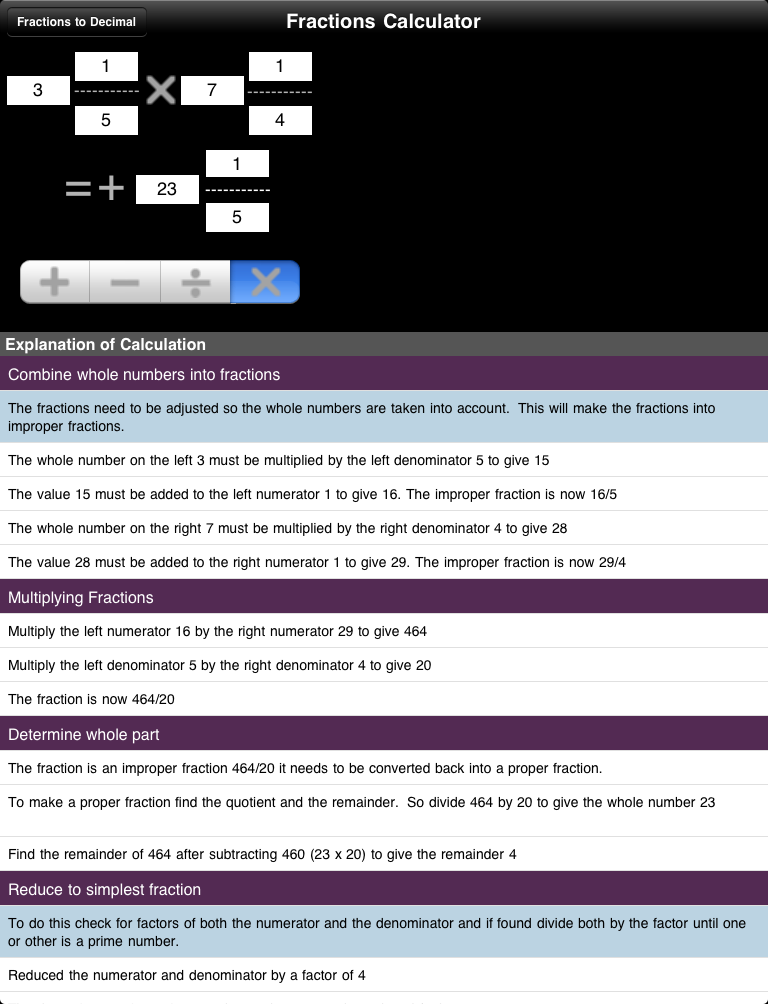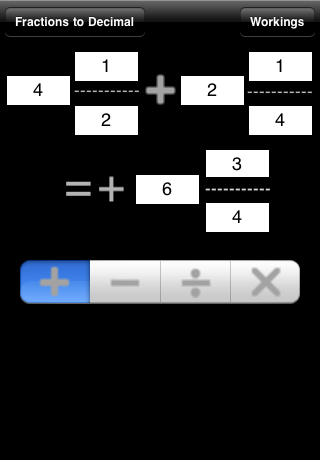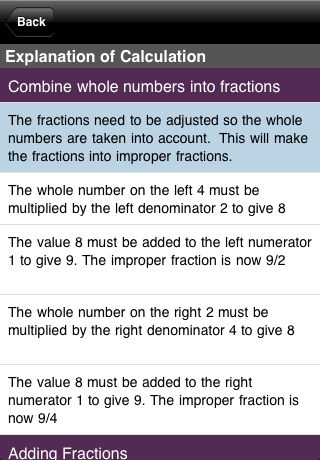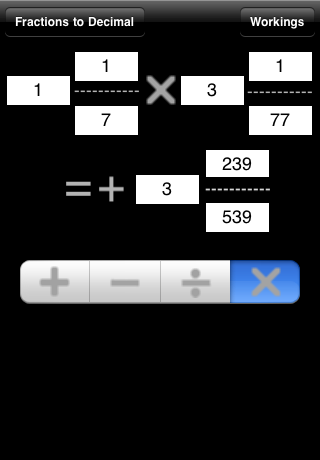Current Activity
Jim Chapple is now working full time on iphone/ipod touch and iPad applications.
Jim Chapple also works on Mac OS X Apps.
Please email Jim Chapple for support issues, information and quotes.
Fractions Calculator
- The fractions calculator lets you Add, Subtract, Multiply and Divide fractions.
- Now that in itself would be enough but this App aims to be educational and it does that by providing a comprehensive explanation of each of the steps necessary to go from the values you type in and the answer given.
- It covers finding the least common denominator, simplifying the fraction, taking the whole number parts into account.
The small thumbnail images below will show larger iPad screenshots.





The following screenshots are from the iPhone. If you have the iPad version then the main difference is that the explanations are shown on the same page as the calculations.
FAQ: This App does not work properly it keeps on crashing, why?
Sometimes Apps just do not download properly. You will need to download it again, for free, using itunes. See Apple Support Pages
About half way down the page there's a set of instructions that starts 'Reinstall the affected application'.
Once iTunes has it then you sync your device and it should then work. If it does not then please to contact me.

When the Application StartsThe App initialises itself to read all the last settings used. Obviously the first time it starts there are no saved items. The main page allows you to select the type of the calculation: Add, Subtract, Divide and Multiply using the large buttons. You can then specify the fractions and the App will work out the answer for you. You can specify either simple fractions with no whole part (such as 1/3 - one third) or fractions that have whole parts (such as 2 and one fifth). Just select the fields you want to change and use the keypad to make the changes. The field that is being edited is highlighted in yellow. When you have changed ever value you want to then select OK and the answer is calculated. In addition the explanation as to how the answer was arrived at is also updated. Select the 'Workings' button to see the explanation page for the calculation made. |

The Workings PageThe Workings page is a step by step guide that explains how the answer was arrived at. It explains how to combine the whole parts (if there are any) into the fractional part to make it an improper fraction. It explains how the fraction was reduced to the simplest possible fraction and why this is sometimes not possible (either the numerator or the denominator is a prime number). It explains how it takes the result and if it is an improper fraction it reduces it to be a whole part and the remaining fractional part. It explains about the Least Common Denominator and how to use it when adding and subtracting fractions. It explains how to Add, Subtract, Divide and Multiply fractions. |



|
